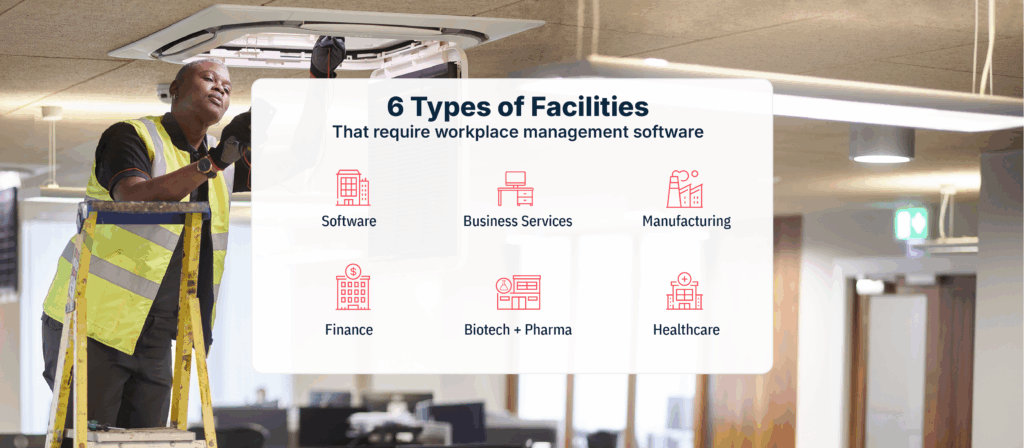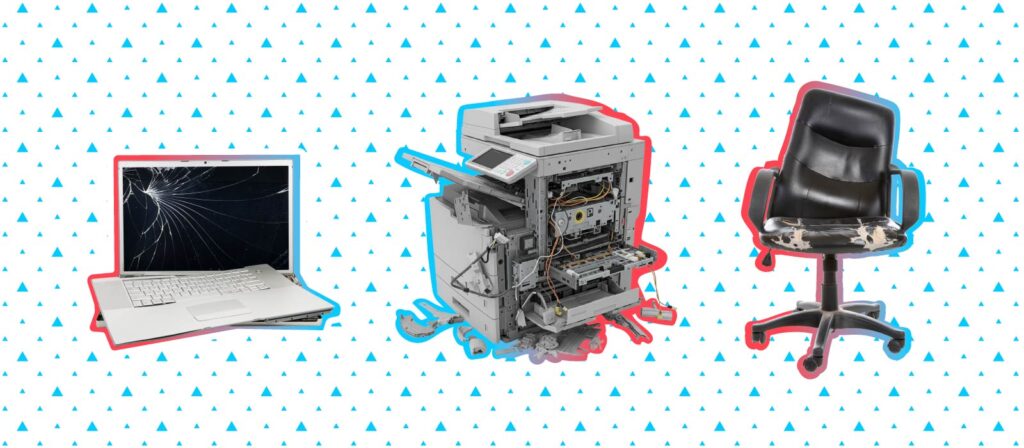
What is Space as a Service (SPaaS)? SPaaS is a business model in which landlords provide a series of features and services to tenants aimed to enrich their experience in a space.
The SPaaS business model has been growing in popularity over the last few years. But what exactly is it and how is it changing the way companies and employees view the workplace?
We’ve seen firsthand how technology has impacted so many aspects of everyday life. From how we shop for groceries to how we stream movies and music, technology has altered routine functions all in the name of ease and saving time.
But what about technology impacting the workplace?
What is SPaaS?
SPaaS is a business model in which landlords provide a series of features and services to tenants aimed to enrich their experience in a space. This could be anything from unique meeting spaces to front desk services to networking events—all within the same space.
A more well-known example of SPaaS in action is coworking spaces. Freelancers, artists, and makers of all kinds are drawn to these spaces to not only find a place to work in, but also to find community.
Though commonly associated with small or independent business owners, coworking spaces aren’t limited to solopreneurs. A member survey from Entrepreneur found that 40% of those polled classify themselves as an employee of a company that works at a coworking space. People who are employed by a company are drawn to these spaces, which can largely be attributed to how people see and use office space.
But how exactly is it changing the commercial real estate (CRE) industry as a whole? Much like the SaaS business model, the SPaaS sector is driven by the impact technology has on how today’s businesses are run.
Let’s take a closer look at SPaaS in action.

How is SPaaS Changing the CRE Landscape?
The American Staffing Association reported a 2.2% YOY increase for temporary and contract workers, which means the demand to work in shared office spaces is on the rise. What’s more, AllWork reports that flexible workspaces have a global market value of about $26 billion.
New generations of workers are seeking employers that offer flexibility, convenience, less liability, and more mobility. With the evolving workplace structure and how modern businesses are shifting, the SPaaS industry can capitalize on those changes.
The success of coworking spaces like WeWork and Galvanize confirm the notion that no matter if you’re a freelancer or employed by a company, people are craving this type of community and work environment. From collaborative workspaces, craft beer and coffee bars, and private phone booths, these spaces are redefining the workplace by blending flexibility, connectivity, and technology. What is a phone booth? A phone booth within an office environment is a small, enclosed space, typically smaller than a normal office or meeting room, where one or two employees can go to work quietly or have small meetings.
As more spaces like this emerge, companies can be more interested in the month-to-month payment terms instead of purchasing or leasing a similar space and trying to recreate the same experience for their employees. Why own when you can use a service to foster the experience you’re looking to provide—and often at a lower price?
SPaaS isn’t just for companies who want to be headquartered in a coworking space either. Long-standing companies can embrace the SPaaS working model in a variety of ways like adding desk-booking or hotel-desking to their office layouts, allowing employees to work remotely, and building spaces primed for collaboration and community building.

How is SPaaS Impacting the Role of a Facilities Manager?
This business model goes beyond coworking spaces and sleek features. At its core, SPaaS is about user experience over physical assets, which means the role of a facilities manager could change as a result.
For example, to ensure a pulse on both building operations and user experience, the facilities team could have employees who focus on each while working together to maintain clarity and consistency within the department.
Employers that give employees the power to choose when and where they work is beneficial not just for them but for the company as a whole. Therefore, in order to provide a higher level of service to tenants, facilities managers will have to refine the employee experience to one that is more connected and flexible, instead of focusing entirely on building operations.
A study from Steelcase found that employees who had this freedom were 88% more engaged and produced better work as a result. Granting this type of flexibility doesn’t hinder productivity; it creates an environment for it to thrive.
Analytics and real-time data will become essential to provide measurable benchmarks for the services offered in a space, as well as to determine how space is used.
Technology like sensors and room booking software collect valuable data that can be used for optimizing workplace function as well as determining what changes to make to enhance the employee experience.
Lastly, how facilities managers approach leasing or purchasing office space may change at the hands of the SPaaS business model. It may make more sense to opt for an office that has SPaaS offerings—but isn’t necessarily a coworking space—instead of leasing or buying it outright.

How Can Facilities Managers Stay Ahead of the Curve?
Like any workplace change, there are ways facilities managers can adjust their existing space to evolve with trends.
Put an emphasis on workplace community
With SPaaS, building a strong sense of community is an appealing—and arguably an essential—component of why this trend has caught on so quickly. To do so, facilities managers need to emphasize fostering a workplace environment based on connection and growth.
Facilities managers can encourage community building by creating collaborative spaces, adding connectivity features like video conference software, and optimizing the workplace to improve the overall employee experience.
Build a scalable office space
One component that makes the SPaaS office model stand out is the ability for companies of all sizes to be fluid in how they scale. These spaces reduce growing pains that companies would typically see when having to move to a bigger area or purchase new furniture. Everything businesses need to succeed is already there.
As technology continues to change the way businesses are run, it’s crucial to invest in a workplace that can grow and change with your company. Purchasing adjustable or movable furniture, like stand-up desks and modular desk systems, to accommodate employee culture changes and needs, and listening to employee feedback are both great ways to ensure your space is one that can handle workplace evolution.
Make the most of technology
More than likely, you already use some technology in your workplace. Audit your workplace technology regularly to make sure it’s not only continuing to serve its purpose but that it’s improving your employees’ experience at work.
Data gathered from devices like sensors and IWMS software can give you more insight into how to optimize your office as well.

SPaaS is paving the way for an all-encompassing workplace
The SPaaS industry is changing the way companies of all sizes do business and look at workplace culture as a whole. For facilities managers, it’s not just about building operations; it’s about creating unique spaces and experiences that encourage employees to grow and connect.
Are you looking to take a more data-backed approach to optimize your workplace? Contact us today, and a member of our team will work with you to find the solution that’s right for your office.
Photo Credits: Rawpixel, Helena Lopes, Rawpixel, Pixabay, Rawpixel



